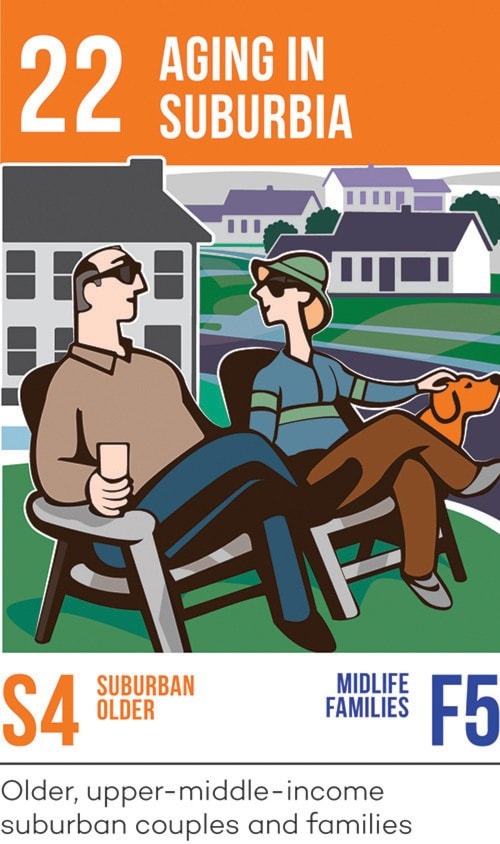Cars line the streets around Robert Bateman middle school, indicative of secondary suites and children in their late teens, but Kelly Foster remembers when the area was full of young families.
Many of the kids that once crowded the streets have left the nest, with those still in the neighbourhood finishing up at the secondary school.
So when Foster, who runs a business out of his home, learned his neighbourhood had been labelled “Aging in Suburbia” by a marketing firm’s algorithm, the 52-year-old couldn’t disagree.
Environics Analytics’s algorithm pegs postal codes around the country to one of 68 different “segments.” It described “Aging in Suburbia” neighbourhoods like the Fosters’ as such: “Once filled with young child-rearing families, this segment is now a sign of the times: home to a mix of older couples aging in place and middle-aged families still raising children and building nest eggs.”
CLICK HERE TO SEE WHAT SEGMENT YOU FALL INTO
While the segment encompasses just two per cent of Canadian households, it’s by far the largest in Abbotsford, where it comprises 18 per cent of homes, according to the company.
The algorithm uses a mix of census, in-house and consumer data, and the segments are meant to give companies a snapshot of different communities in order to target customers or customize marketing techniques.
The second-largest Abbotsford segment is called “South Asian Society,” which features “a blend of Sikh, Hindu and Muslim immigrants” who “earn average incomes, which they diligently invest for their children’s education.” That segment comprises 12.7 per cent of Abbotsford households.
No other segment encompasses more than seven per cent of Abbotsford.
Others in the top-five include: Our Time, defined as “older and mature, lower-middle-income suburbanites”; Suburban Scramble, defined as “young, lower-middle-income suburbanites”; and Heritage Hubs, defined as “middle-aged, multi-ethnic suburban families.”
Not every segment hits the nail on the head, as several commenters who entered their own postal codes pointed out on The News Facebook page.
Danton Jennex said the formula got his Clearbrook neighbourhood, near Old Yale Road, about half right.
He lives in an area defined as “Lunch at Tims,” by the Environics algorithm. Such neighbourhoods are supposedly “tight-knit communities” consisting of “downscale singles and families,” with an inclination for eating at burger joints, delis, fish and chip restaurants and coffee shops like Tim Horton’s.
Jennex, who lives on his own and rents while working at a metal fabricating shop, said his own neighbourhood is a mix of residents.
“It seems like everyone has their own thing going on,” he said. While some houses are in need of maintenance, many others have been renovated recently, including some since the last census was performed.
Danny Heuman, Evironics Analytics’ vice-president of marketing and development, pegged the accuracy rate of the system at around 80 per cent. Anomalies or fast-changing neighbourhoods could throw things off, but Heuman is otherwise confident that the program can accurately determine the average resident for most Canadian neighbourhoods.
“What we’re looking for is a classification that … captures the average person,” he said.
Other top segments in Abbotsford-Mission:
2. South Asian Society
3. Our Time
4. Suburban Scramble
5. Heritage Hubs
6. Home Sweet Rows
7. Low-Rise Renters
8. Grey Pride
9. Satellite Burbs
10. Trucks & Trades
